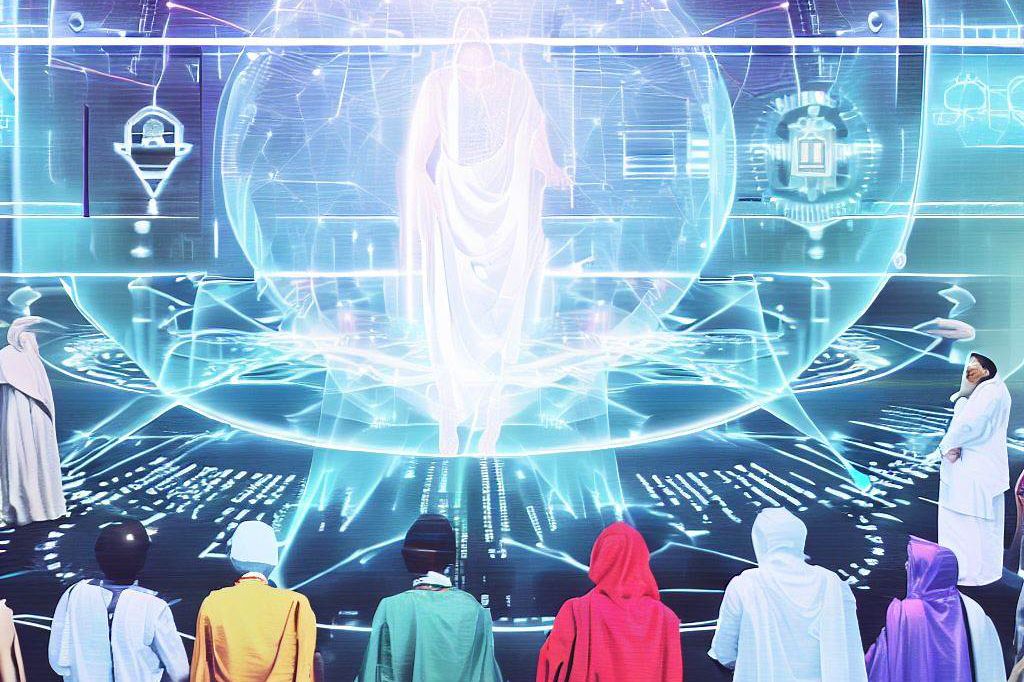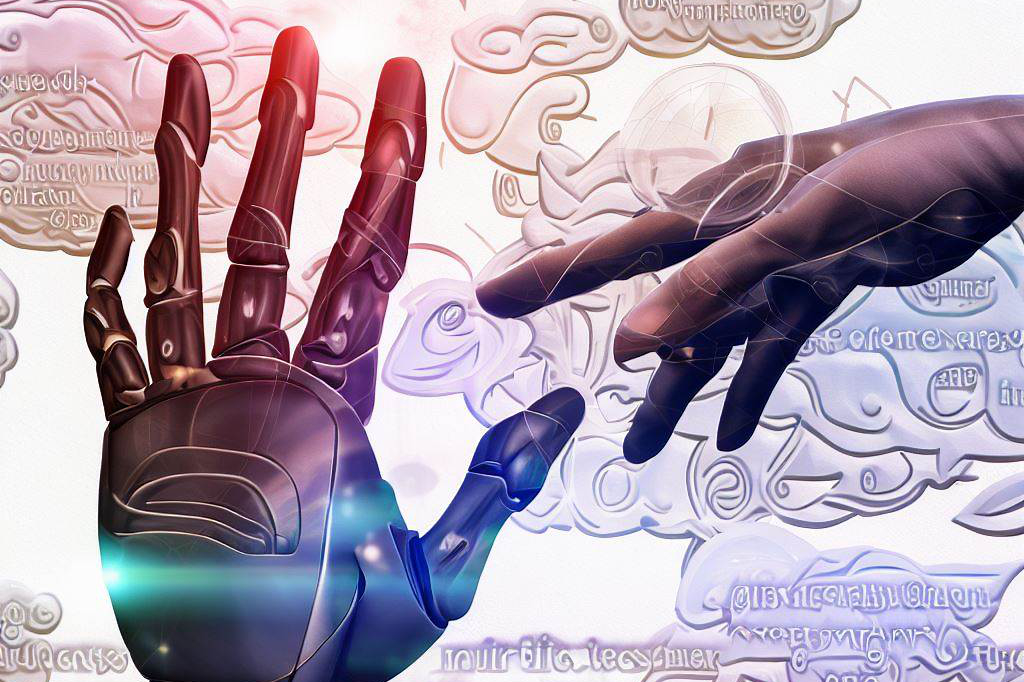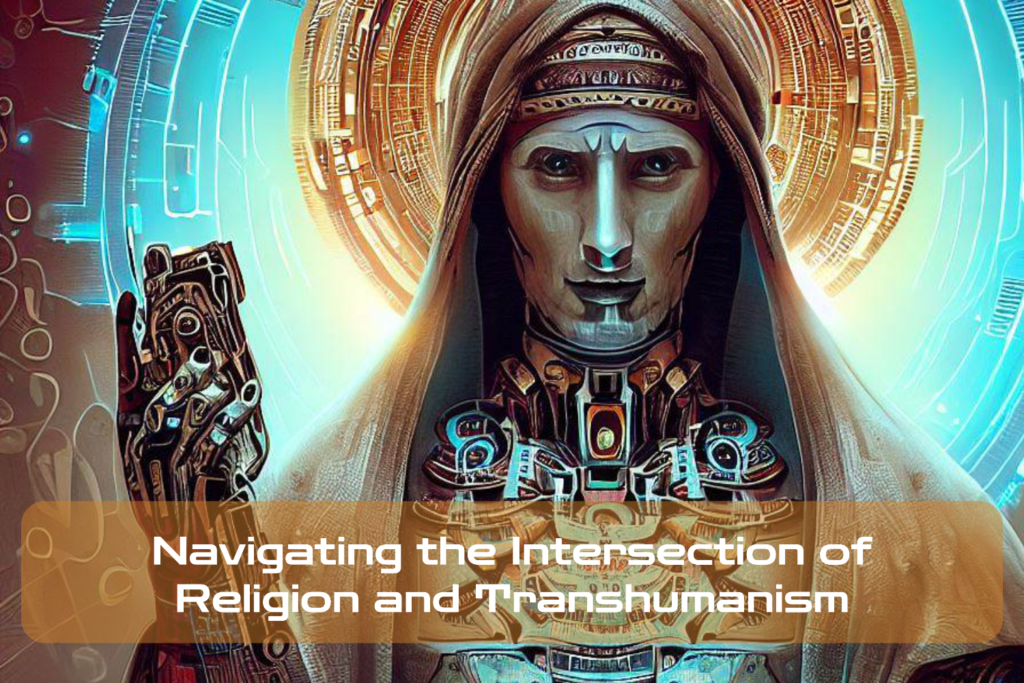Transhumanism is a philosophical and cultural movement that advocates for the use of science and technology to enhance human physical, intellectual, and emotional capacities. It aims to overcome the limitations of human biology by developing technologies that can augment or even replace our natural functions. Transhumanists envision a future where humans can live longer and have extraordinary abilities such as superintelligence, superstrength, and even immortality.
Religion, on the other hand, is a set of beliefs, practices, and values concerning the nature of reality and our place in it. Religion provides answers to fundamental questions about existence, such as the meaning of life, the origin of the universe, and what happens after death.
It also offers moral guidance on how we should live our lives. The intersection between transhumanism and religion has been debated among scholars from various disciplines.
Some argue that transhumanism challenges religious beliefs about human nature, while others see transhumanism as an extension of religious aspirations for transcendence. Given these conflicting perspectives, it is important to examine religion’s role in shaping transhumanist thought.
Definition of Transhumanism and Religion
Understanding how religion intersects with transhumanist thought requires first defining both concepts.
Transhumanism is often defined as a movement that seeks to enhance human capacities beyond their evolutionarily imposed limits through science and technology (Bostrom 2005).
It does not necessarily advocate for specific technological interventions but instead promotes an open-minded approach towards innovation in various fields such as
- biotechnology,
- nanotechnology,
- artificial intelligence (AI),
- robotics
- or cognitive sciences.
Religion refers to sets of beliefs concerning divine or transcendental realms, often rooted in faith-based traditions (e.g., Christianity, Islam, or Hinduism).
These traditions offer accounts concerning humanity’s purpose on earth alongside moral principles intended to guide human behaviour. Religious communities exist across most cultures, and their practices typically involve worship, prayer, or other religious rituals.
Importance of Discussing the Role of Religion in Transhumanist Thought
The relationship between transhumanism and religion is of critical importance to our contemporary world since each of these movements attempts to answer fundamental questions about human existence. As such, they are both concerned about the very nature of humanity itself.
Understanding the role that religion plays in shaping transhumanist thought helps us understand how this intersection may evolve. Furthermore, as technological advancements continue to redefine what it means to be human and what our futures may hold, the ethical implications surrounding these issues become even more crucial.
By examining how religious beliefs interact with transhumanist ideas concerning human enhancement or immortality, among others, we can gain insights into how such enhancements could be viewed from a moral perspective. Therefore, understanding this topic will help us make informed decisions regarding such scientific advancements based on a comprehensive understanding of both sides’ perspectives.
The Conflicts between Religion and Transhumanism

The Concept of Human Enhancement in Transhumanism and Its Conflict with Religious Beliefs about the Sanctity of Life
One of the core beliefs of many religions is that human life is sacred and should not be tampered with. This belief clashes directly with the concept of human enhancement in transhumanism, which seeks to improve the quality of life beyond what is currently possible through natural means.
Proponents of transhumanism argue that enhancing human capabilities, such as intelligence, strength, or longevity, can improve our health and well-being and help us overcome our limitations as a species. However, for many religious believers, the idea of artificially enhancing or modifying biological life goes against their fundamental beliefs about the sanctity of life.
For example, some religious leaders have expressed concern about genetic engineering techniques being used on embryos to create “designer babies.” They believe that such practices violate fundamental ethical principles by deciding which traits are desirable and which are not, leading to a society where certain types of humans are valued over others. Furthermore, they argue that such practices could lead to irreversible genetic damage to future generations if something goes wrong during the modification process.
The Idea of Immortality in Transhumanism and Its Conflict with Religious Beliefs About the Afterlife
Transhumanists often promote technological means for achieving immortality through mind uploading or cryonics. These concepts are at odds with many religious beliefs about an afterlife in which souls continue on after death.
The idea that a person’s physical body can be replaced by an artificial one leaves open questions like:
What happens to a person’s soul if their body perishes?
Will they continue their existence as digital data?
Or will they simply cease existence altogether after death?
Many religious believers also view death as a necessary step towards reaching an afterlife or higher spiritual state.
Some may feel that the pursuit of immortality through technology is a form of hubris or a rejection of God’s plan for the human experience. The pursuit of immortality through technological means can thus be seen as an affront to religious sensibilities.
The Potential for Technology to Replace or Diminish the Role of Religion in Society
One possible consequence of advancements in transhumanist technology is that it could lead to a decline in religion’s influence and importance within society. As people become more reliant on technology to solve their problems, they may rely less on traditional sources of spiritual guidance and support. Furthermore, some transhumanists believe that science and reason will eventually answer all meaningful questions about humanity, making religious beliefs irrelevant.
This potential outcome has led many religious leaders to express concern about the role technology plays in people’s lives. They worry that technological advances will lead people away from their faiths, leading to a loss of moral values and societal stability.
Overall, there are clear conflicts between transhumanism and traditional religious beliefs about sanctity, the afterlife, and morality. These differences reflect fundamental philosophical divergences about what it means to be human – as well as what we can aspire towards – which will continue to be explored by both scientists and theologians alike.
The Synergies between Religion and Transhumanism

Shared Goals: Improving the Human Condition, Reducing Suffering, and Promoting Well-being
Although transhumanism and religion may seem like opposing forces, both share the common goal of improving the human condition.
Transhumanists seek to overcome biological limitations through scientific advancements in order to enhance human capabilities. Similarly, religions have always aimed to promote human flourishing by advocating for virtuous behavior, spiritual growth, and social justice.
Moreover, both transhumanists and religious adherents seek to reduce human suffering. For example, from a transhumanist perspective, developing cures for diseases or finding ways of extending life can alleviate suffering caused by physical or mental health issues.
In religious traditions as well, there is an emphasis on compassion towards others who are in pain or distress because of illness or other hardships.
The promotion of well-being is another shared goal between transhumanism and religion.
Intransigent happiness is an essential aspect of many religious teachings; for example, Buddhism focuses on inner peace and contentment with one’s current state of being through meditation practices such as mindfulness techniques. Similarly, from a transhumanist perspective, well-being can be enhanced through technology that augments physical abilities or cognitive processes.
Religious Perspectives on Science and Technology as a Means to Serve Humanity
Many religions have historically been associated with technological advancements that serve humanity’s interests.
For instance, the medieval Islamic civilization was known for its scientific achievements in fields such as
- mathematics
- astronomy
- medicine
- botany
- chemistry
- physics
- architecture
- metallurgy.
From the Muslim perspective, science was a means by which Allah revealed his knowledge to people about his creation, making them feel closer to him.
Hinduism views science as complementary to religious practice rather than conflicting with it.
Hindu texts laid down precepts that encourage curiosity about the universe and seeking knowledge about it. The Bhagavad Gita says,
“Those who see everything in the Supreme Lord and see all living beings as parts of Him, they never become separated from Him, nor do they ever suffer.”
Thus, from a Hindu perspective, science enables us to understand and appreciate the intricacies of creation as a reflection of God’s transcendental nature.
Similarly, the Catholic Church has endorsed scientific inquiry and technological progress in its teachings. In particular, Pope Francis has expressed strong support for science that can improve human life and promote sustainability for the planet.
Possibilities for Religious Institutions to Adapt to Technological Advancements
Religious institutions have often been criticized for being slow to adapt to new technological advancements. However, these institutions have also been known for their resilience and adaptability over time.
For example, churches have used social media platforms like Twitter or Facebook as ways of reaching out to younger audiences who are eschewing traditional religious communities.
Moreover, some religious organizations are beginning to explore ways of incorporating transhumanist ideas into their teachings.
For instance, Christian transhumanism is a relatively new movement that emphasizes a union between Christianity and transhumanist thought by promoting the use of technology in order to enhance human abilities.
The movement’s proponents argue that enhancing our physical or cognitive abilities through technology can enable people to better serve God by improving their ability to help others. Despite apparent conflicts between religion and transhumanism over issues such as human enhancement or mortality, there are shared goals between these two perspectives on what it means to be human, such as reducing suffering or promoting well-being.
Additionally, religious traditions have views on science as being complementary rather than conflicting with faith; hence there is much potential for synergy between religion and transhumanism, especially with regard towards technological advancements benefiting humanity.
By adapting religious teachings into modern forms, combined with technological advancement, we may be able to create an even better world than what we currently have.
Examples of Religious Approaches to Transhumanist Thought

Christian Transhumanism: A Marriage of Faith and Technology
The concept of Christian transhumanism is a relatively new, emerging in the last decade as a response to the growing interest in transhumanism among Christians.
At its core, Christian transhumanism is the idea that technology and faith can work together to improve human beings and society as a whole. While this might seem like an unlikely pairing at first glance, proponents of Christian transhumanism argue that technology can be used to promote Christian values such as compassion, love, and justice.
One example of Christian transhumanist thought is the work of theologian Ted Peters, who argues that humanity has a divine mandate to use technology to improve ourselves and our world. Peters sees technological advancements such as genetic engineering and artificial intelligence as part of God’s plan for humanity and believes that Christians have a responsibility to engage with these technologies in a way that reflects their faith.
Another example is writer James Hughes’ idea of “proactionary Christianity,” which advocates using technology proactively – not just reactively – to address issues such as poverty, disease, and war. Hughes argues that Christians have historically been hesitant about embracing new technologies due to fears about playing God or violating human dignity; however, he believes that this hesitancy has prevented Christians from fully engaging with the potential benefits of technological advancements.
Islamic Futurism: Balancing Tradition with Progress
Islamic futurism is an emerging movement within Islam that seeks to reconcile Islamic teachings with advancements in science and technology. At its core, Islamic futurism aims to balance tradition with progress by embracing technological change while also remaining faithful to Islamic values.
One prominent figure within the Islamic futurist movement is Turkish-Islamic philosopher Bediuzzaman Said Nursi. Nursi believed that science and religion were not mutually exclusive and that Islam could be a powerful force for social progress if it embraced scientific advancements.
He argued that Muslims have a responsibility to engage with science and technology in order to improve society, while also remaining faithful to Islamic principles such as compassion, justice, and mercy.
Another example of Islamic futurism is the work of Iranian-American scholar Reza Aslan.
Aslan argues that Islam has always been a forward-thinking religion which embraces change and progress; however, he believes that this aspect of Islam has been suppressed in recent times due to political and social factors. Aslan advocates for a renewed focus on innovation within the Islamic world, arguing that technology can be used to promote Islamic values such as social justice and equality.
Buddhist Perspectives on Mind Uploading: The Search for Enlightenment
Buddhist perspectives on mind uploading are complex, as they involve navigating the tension between traditional Buddhist beliefs about the nature of consciousness and the potential benefits of technological advancements such as brain-computer interfaces (BCIs).
At its core, Buddhism seeks to achieve enlightenment by transcending the limitations of the physical body; however, some Buddhists see mind uploading as a way to transcend these limitations even further.
One example of this perspective is the work of philosopher David Chalmers, who argues that consciousness is not solely dependent on physical processes but also on “non-physical” elements such as information.
Chalmers believes that BCIs could potentially facilitate mind uploading by allowing individuals to transfer their consciousness into digital form. However, other Buddhists are more skeptical about mind uploading due to concerns about severing the connection between body and mind.
Some argue that true enlightenment cannot be achieved through technological means alone; instead, it requires a deep understanding of Buddhist teachings about impermanence, suffering, and non-self. Overall, Buddhist perspectives on mind uploading highlight the importance of balancing technological progress with traditional spiritual values in order to achieve true enlightenment.
Rarely Known Small Details: Historical Contexts

Historical examples of religious movements that embraced technological advancements include the Protestant Reformation’s emphasis on literacy and printing press technology
While some may assume that religion and technology have always been at odds, history reveals a more complex relationship.
The Protestant Reformation of the 16th century, for example, saw the rapid spread of new ideas thanks to technological advancements in printing press technology.
Martin Luther’s Ninety-Five Theses, which challenged Catholic Church doctrine and sparked the Reformation, were printed and distributed widely thanks to Johannes Gutenberg’s invention.
Protestants also emphasized literacy and education for all believers, leading to increased access to knowledge and ideas. These technological advancements played a crucial role in shaping religious thought during this period.
How ancient religions like Hinduism have always incorporated ideas
While modern transhumanism is often seen as a new movement focused on using technology to enhance human capabilities, ancient religions have long incorporated ideas about transformation and transcendence.
In Hinduism, for example, the concept of moksha involves breaking free from the cycle of rebirth through spiritual development.
This pursuit of enlightenment could be seen as a form of enhancement or transformation beyond typical human limitations.
Similarly, Buddhism emphasizes meditation practices designed to achieve ultimate consciousness, or “nirvana.” These historical examples remind us that the desire for enhancement or transformation has long been a part of human spiritual traditions.
Final Thoughts

Religion and transhumanism may seem like strange bedfellows at first glance. However, upon closer examination, we see that there are both conflicts and synergies between these two areas of thought. While some religious beliefs may conflict with certain transhumanist aims, such as immortality or enhanced abilities through technology, there are also shared goals around improving well-being and reducing suffering.
Moreover, historical examples remind us that the relationship between religion and technology is not always fraught with tension. Religious movements have embraced technological advancements in the past, and ancient spiritual traditions have long involved ideas of transformation and transcendence.
As we continue to explore the intersection of religion and transhumanism, it will be important to consider both the conflicts and synergies that exist as well as the historical contexts that have shaped these worldviews.
Ultimately, both religion and transhumanism offer unique perspectives on what it means to be human and how we can strive for a better future.

C M, a seasoned editor, journalist, and consultant, is deeply fascinated by the convergence of technology, space, and the future of humanity.
With a particular interest in transhumanism, futurology, and the philosophical and ethical dimensions of these domains, C M serves as the lead contributor to TranscendSphere and SpaceSpotlight.
When not penning insightful articles on these rapidly evolving fields, C M indulges in their love for podcasts and books, proudly embracing their status as a ‘Happy Nerd Extraordinaire!’





